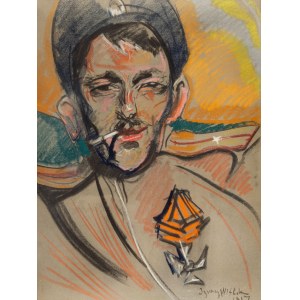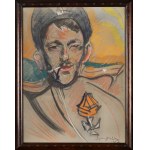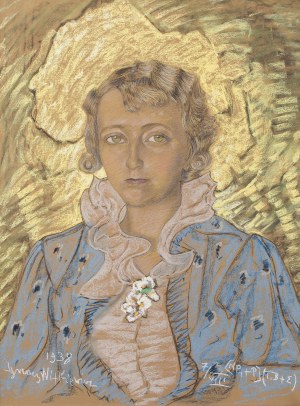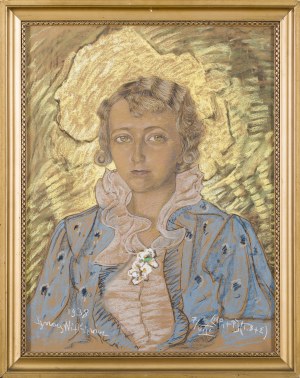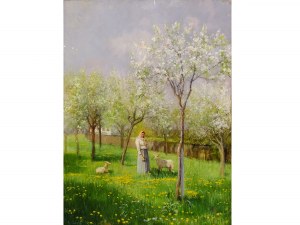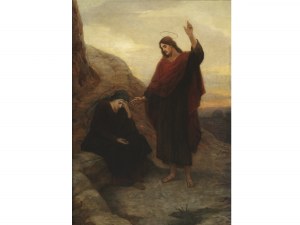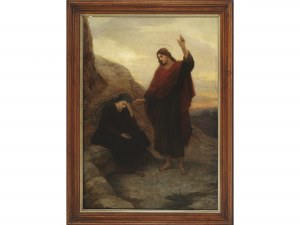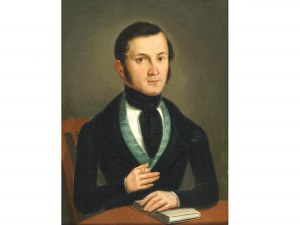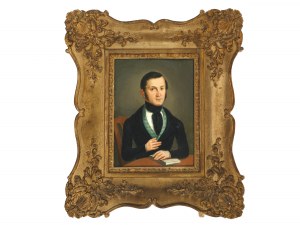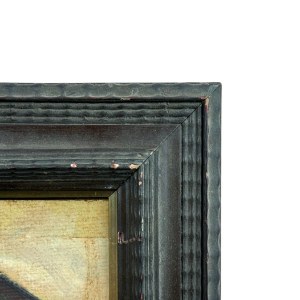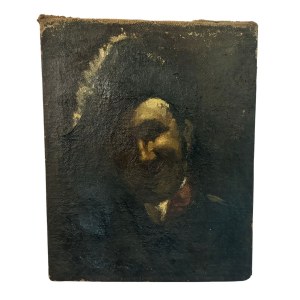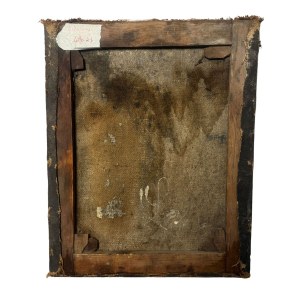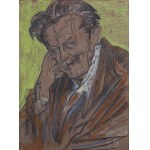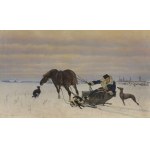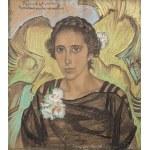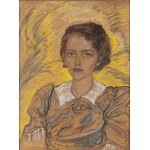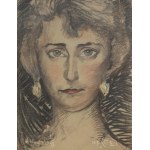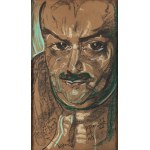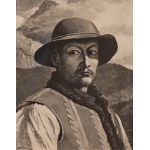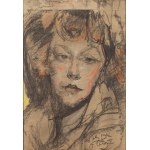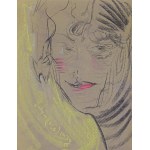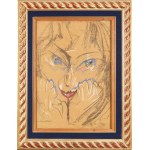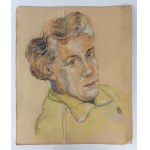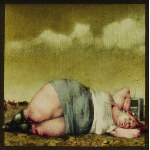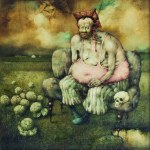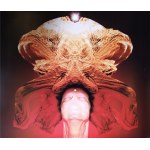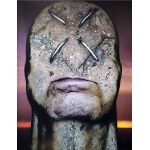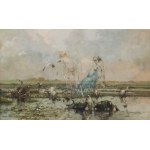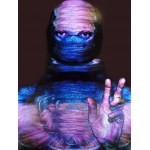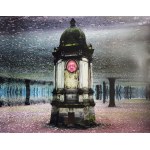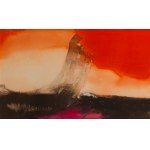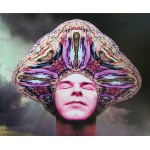pastel / paper
61.6 x 47 cm
signed and dated on the underside: Ignacy Witkiewicz | 1917
Stanislaw Ignacy Witkiewicz (Witkacy) (1985-1939) - painter, photographer, writer, playwright and philosopher, one of the pioneers of the Polish avant-garde, still considered an outstanding figure not only of domestic, but also of world art of the 20th century. His father, architect Stanislaw Witkiewicz, opposing the state education system, educated his son independently, allowing him to develop his own interests individually. At an early age Witkacy became fascinated with philosophy and wrote his first dramas, but it was the visual arts that became the focus of his studies - in 1905 he entered the Academy of Fine Arts in Krakow, where he attended the studio of Jan Stanislawski and later also Jozef Mehoffer. However, he did not complete his studies, choosing instead to travel around Europe and soon the farthest corners of the world, accompanied by anthropologist Bronislaw Malinowski. During World War I, he served in the tsarist army, which he left after the outbreak of the Bolshevik Revolution. He eventually settled in Zakopane, a city with which he was particularly associated. There he perfected the author's theory of Pure Form, in which he advocated a move away from naturalism in art in favor of surprising compositional "strangeness," confronting the viewer with deeper metaphysical experiences. However, around 1924, disillusioned by the misunderstanding of his art, Witkacy dissociated himself from theoretical considerations by creating the Portrait Company - a mocking, quasi-commercial venture that allowed him to make easy money. Among other things, the rules included a point stating that "the client must be satisfied. All criticism and corrections on demand are excluded.". The Company became very popular, and the artist immortalized images of almost all the interwar cream of society. Although the Company's activity was intended as an ironic joke, the portraits painted at the time cannot be denied artistic value and psychological depth. In 1939, upon hearing that the Red Army had entered Poland, Witkacy committed suicide by taking a large dose of luminal.
S. I. Witkiewicz, Parę dość stosunkowo luźnych uwag o portrecie w ogół i moich portretach w szczególności, [in:] Stanisław Ignacy Witkiewicz bez kompromisu. Critical and journalistic writings, ed. J. Degler, Warsaw 1976, p. 93.
_________________________
This portrait of a man from 1917 belongs to an exceptional and unique group of works (67, including 29 portraits) that Witkacy made during his stay in Russia in 1914-1918. Upon hearing of the outbreak of war, the young artist returned from Australia. In St. Petersburg, Witkacy entered officers' school, and upon graduation was accepted into the elite Pavlovsky Regiment of the Leibguard. After a famous bloody battle in 1916 with the Austrian army near Vitonezh, he was seriously wounded and evacuated to St. Petersburg. He did not return to the front again, but watched firsthand the turmoil of the February Revolution and the brutal political changes in Russia. In conversations with friends, the sensitive artist recalled the time of World War I as one of the most nightmarish in his life.
Until 1914 Witkacy drew exclusively in charcoal, while in 1915 he gradually began to introduce pastel into his works. In 1917, charcoal drawing still served Witkacy as the basis of his compositions - a sketch gradually supplemented by colored pastels, serving mainly to enliven the work and emphasize its important parts. At this time Witkacy portrayed not only himself - he created portraits of members of the St. Petersburg Polish community and soldiers and officers of the Pavlovsky Regiment. This was probably how the artist earned money to support his decadent life. It was also at this time in Russia that the system that gave rise to the later Portrait Company Regulations was born. As Irena Yakimovich wrote: "it was in Russia that the time of synthesis came; Witkiewicz began to try on his painting to his thinking about it."



